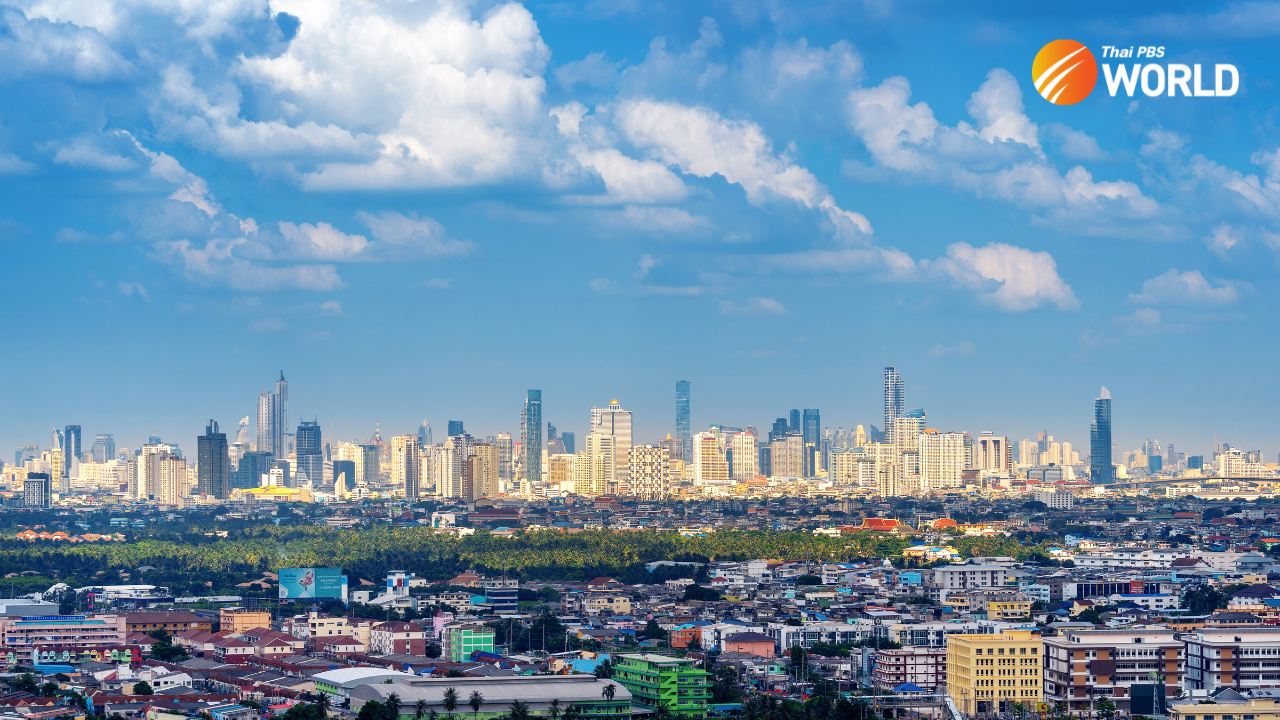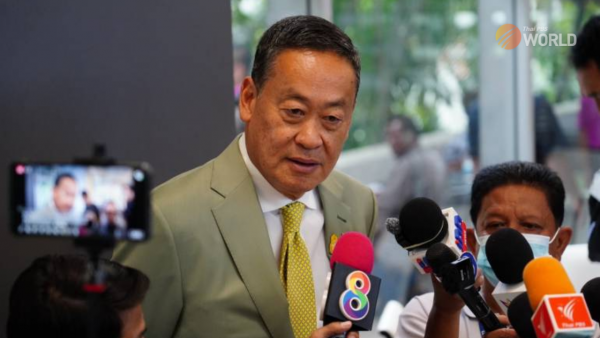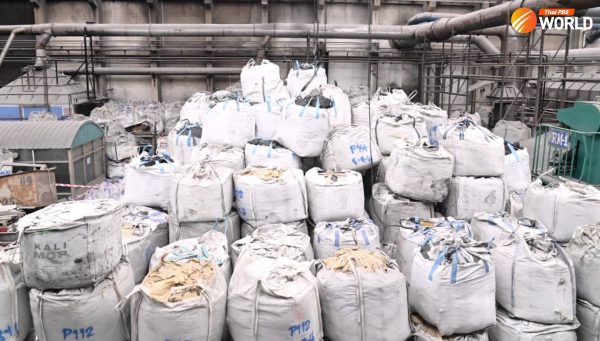Global headwinds could blow Thai economy off track

The decelerating export growth in July has raised concerns that the outlook for Thailand’s economic growth may be bleak because of an increasingly likely global slowdown.
The Thai economy grew 2.5 percent year on year in the second quarter of the year, continuing the growth trajectory one has seen — of 2.3 percent in the first quarter this year and 1.8 percent in the fourth quarter of last year.
“The GDP growth rate in the second quarter, however, was slow compared to the market expectation of 3 percent,” said Kirida Bhaopichitr, research director for International Economics and Development Policy at Thailand Development Research Institute, an independent think-tank.
The factors driving the economy in the second quarter were export, consumption, and tourism, according to Danucha Pichayanan, secretary-general at the National Economic and Social Development Council (NESDC), the state-owned think-tank.
The expansion came from acceleration in the services sector, partly due to relaxation of COVID-19 restrictions and the continuous implementation of the government’s stimulus measures to support tourism, resulting in a substantial surge in the number of foreign tourist arrivals and Thai visitors, said the NESDC.
The second quarter saw the service sector grow by 4.6 percent, accelerating from 2.9 percent in the first quarter of 2022. Besides, the agricultural sector expanded by 4.4 percent, as a result of the higher yields of main crops. However, the industrial sector declined by 1.8 percent, from a rise of 0.6 percent in the first quarter of 2022, due to lower production.
Private consumption expenditure increased by 6.9 percent in the second quarter of the year, nearly doubling from a 3.5 percent rise in the first quarter.
The expansion was reflected in the 13.7 percent growth in net services, an over three times surge from 4.1 percent in the previous quarter. Moreover, spending on semi-durable goods continued to expand. In contrast, the spending on durable and non-durable goods rose by 3.4 percent and 2.7 percent, compared to 4.5 percent and 3.3 percent in the previous quarter, respectively.
But looking ahead, Kirida warned of weakening consumer spending as the prices of goods will rise in the latter part of this year. She said that corporates had tried to avoid passing the higher cost burden on to consumers in the last several months, but they have started to increase the prices of their products.
Free university education would boost equality – but can Thailand afford it?
Weak investment
Private investment grew by 2.3 percent in the second quarter of the year, decelerating from 2.9 percent in the previous quarter. Meanwhile, public investment fell by 9.0 percent, continuing the downward trend from a 4.7 percent reduction in the first quarter.
Supavud Saicheua, an advisor at Kiatnakin Phatra financial group, said overall investment has remained weak for several years compared with other countries at a similar level of economic development.
Slowing export growth
Thai exports grew 4.3 percent in July and by 11.5 percent in the first seven months of the year, the Commerce Ministry has said.
“Exports are expected to grow 8 percent this year,” said Chaichan Chareonsuk, chairman of the Thai National Shippers’ Council, an exporters’ club.
He expressed concerns about the Chinese market. Despite the Chinese government starting to slowly ease its COVID-19 lockdown measures, Thai exports to China have failed to gather steam and contracted 20.6 percent in July. Thai exporters should closely monitor China’s economic conditions, he suggested.
China is one of Thailand’s major export markets along with the US, Europe, Japan and ASEAN.
The Chinese government aims to achieve economic growth of 5.5 percent this year, but major global banks have recently slashed their growth projection to around 3 percent, well below the official target. They cited the impact of the zero-COVID policy; Chinese authorities often impose city shutdowns when they find even a few cases of new infections.
Real estate problems stemming from debt defaults of property developers and a large number of home-buyers stopping their mortgage payments have deepened the Chinese property market crisis. Combined with the recent severe drought in large parts of the country, China presents a grim economic picture. China’s government launched a stimulus package worth about 1 trillion yuan recently but critics said it was too late and too little.
The US, one of Thailand’s largest export markets, is battling rapid rising inflation, the highest in over 40 years. The US Federal Reserve has increased its policy rate aggressively and has vowed to continue doing so, sparking fears of a recession. A recession in the US would have serious implications for the Thai export sector.
Consumers feeling the pinch of rising cooking gas and electricity prices
Geopolitical risks
Europe is grappling with an energy crisis as Russia has shut down the natural gas pipeline to Europe. Corporations and consumers have been urged to cut energy consumption as winter is approaching.
Many fear that it would lead to an economic recession in Europe and a surge in inflation amid the fallout of Russia’s invasion of Ukraine. There are no indications the war will end soon. So, the prices of energy and fertilizer will remain high. Thailand largely depends on the import of oil, gas and chemical fertilizer. An increase in their prices will translate into higher production costs for businesses and pinch Thai consumers through a higher cost of living.
Bank of Thailand (BOT) Governor Sethaput Suthiwartnarueput is worried about the impact of war in Europe and the tensions between China and the US over Taiwan. He said the outlook for the Thai economy will also depend on geopolitical dynamics.
Many analysts have pointed out that tensions between major world superpowers have intensified, which will further restrict international trade and prolong the high price of energy.
Rising costs
The BOT has also started to increase its policy rate partly to prevent capital outflows caused by the higher rate in the US and partly to curb rising inflation. The central bank is expected to raise the rate again after it hiked the key policy rate from 0.50 percent to 0.75 percent in August.
Minimum wage is to increase by 5 percent, starting October this year. Although wages do not constitute a large part of the cost of production, factories have faced multiple cost of production increases, such as energy and materials, logistics and funding, said Tanit Sorat, vice chairman of the Employers’ Confederation of Thai Trade and Industry Federation.
Due to unfavorable conditions, the government has had to extend its consumption subsidy programs — known as half-half co-payment scheme — into the fifth phase, starting September until October-end.
Uncertainty of GDP growth
The NESDC has projected the Thai economy will grow 3 percent this year and the Finance Ministry has forecast 3.2 to 4.2 percent growth next year. But Supavud argued that there is only a small chance of achieving the target when the global economy is rapidly decelerating from about 3.2 percent growth this year to 2.9 percent next year.
Many analysts have said that the recovery of the tourism sector may offer succor, but uncertainty remains as the state of the global economy could affect tourist spending.
By Thai PBS World’s Business Desk






